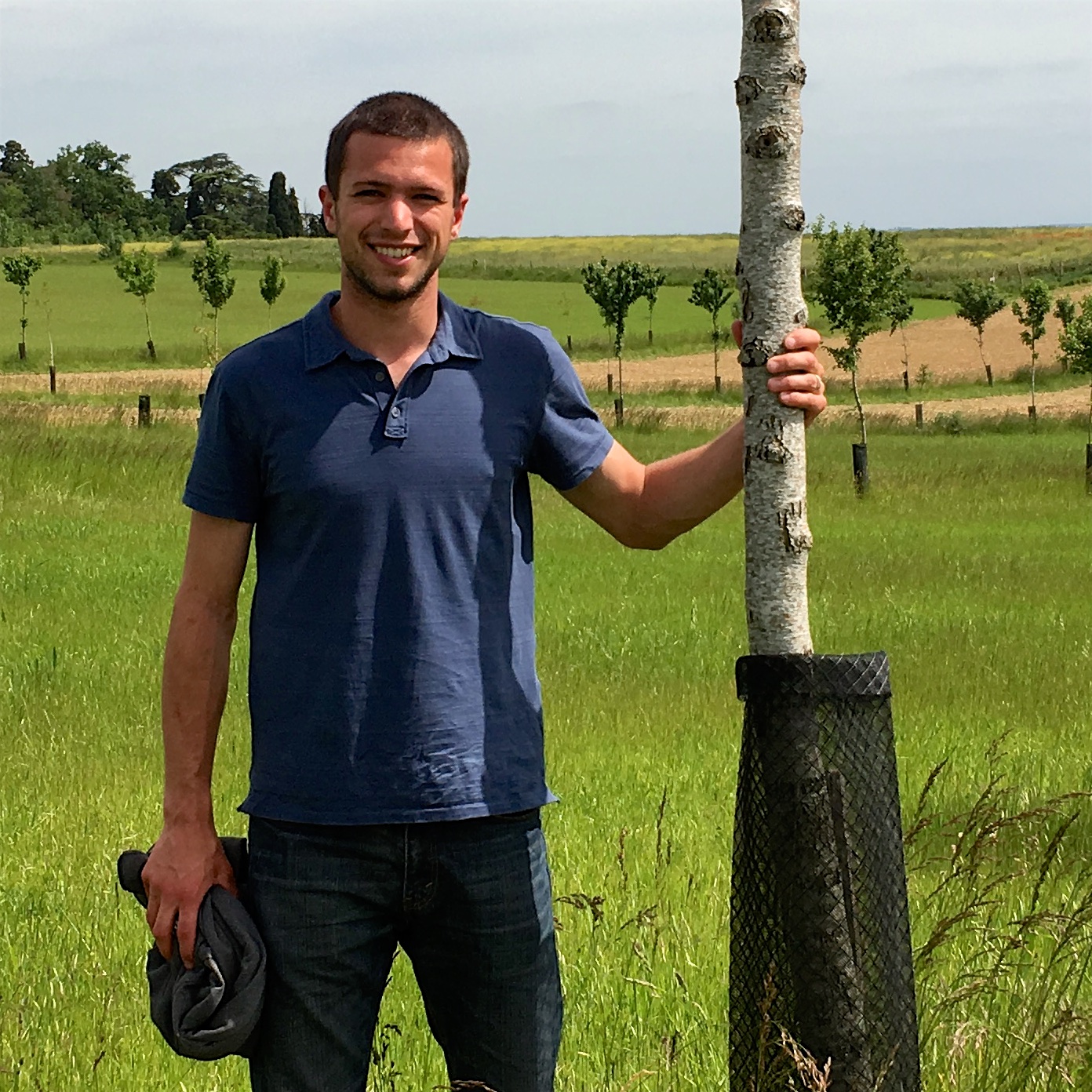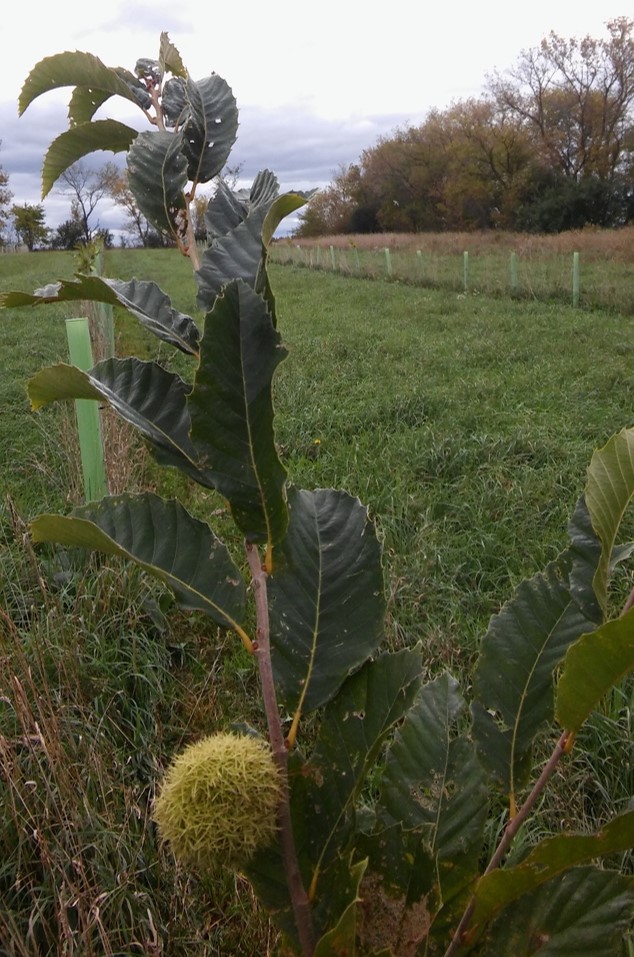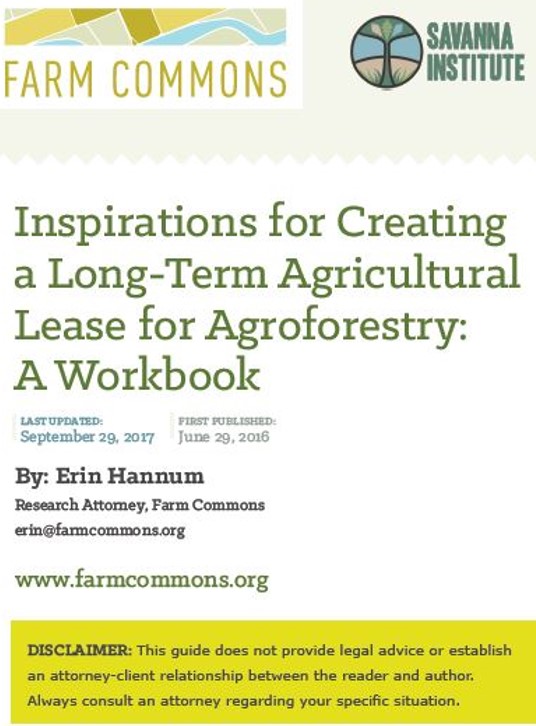For beginning farmers, the leasing process can be the beginning of an ongoing relationship with land and others who care about it. With nearly 40% of all farmland under a lease, there’s a good chance that farmers entering the world of agroforestry will also enter the world of agricultural leases. Leases are private contracts granting a farmer-tenant the right to occupy and use a landowner’s property for agricultural purposes. In most instances, an agricultural lease isn’t terribly complex. The rights conveyed to the farmer-tenant are typically exclusive (only the farmer can occupy and use the property), and generally binding on future landowners. Leases are also usually transferable between farmer/operators. Of course, these and all other provisions can be modified if the parties require different terms.
Leasing allows new farmers access to land - including land well-suited to agroforestry - that they could not otherwise farm without a large upfront investment. Nevertheless, while beginning farmers may be excited about the prospect of agroforestry, they may be much less enthusiastic about the prospect of negotiating and signing a lease. They may see the process as an unpleasant hurdle to overcome in order to get to start working the land.
While it’s understandable to be put off by legal matters, there are benefits to framing the leasing process in a more holistic light. Rather than a legal formality, the lease can facilitate a deeper relationship between two parties connected to the land. More than just a legal agreement, an agricultural lease is a dialogue between landowner and farmer. Both parties likely care about the land and have an interest in a successful partnership because of the long-term benefits agroforestry provides. Therefore, agroforestry ventures are the perfect opportunity to foster a long-term relationship with the landowner, via the lease agreement (Figure 1).
 Figure 1. Kevin Wolz entered into two long-term agroforestry leases in the Midwest and aspires to enter into more leases and other long-term collaborative agroforestry ventures in the years to come.
Figure 1. Kevin Wolz entered into two long-term agroforestry leases in the Midwest and aspires to enter into more leases and other long-term collaborative agroforestry ventures in the years to come.
Understanding the landowner’s motivation for engaging agroforestry producers is the perfect starting point. A landowner may appreciate the ecological benefits of agroforestry or seek the aesthetic benefits of a more permanent agricultural landscape. A long-term lease gets the landowner a tenant farmer they can count on, potentially increasing the property value due to the improved soil and ecological balance, while providing supplemental income. By exploring in detail the motivations of potential landlords, lessees can build a solid foundation for a shared vision for an agroforestry venture.
Since nature’s processes run longer than a few years, an agroforestry lease mirrors this long-term ecological view. The best lease for both landowner and producer often covers at least a few years and up to several decades. The success of such an enduring relationship rests on the details. Drafting rental rates, management provisions, and the division of risk between parties, to name just a few examples, requires careful consideration of the exact plants and animals involved. For example, a landlord and producer may need to agree on a penalty to be assessed against the landlord if the landlord cancels a long-term lease early. A fair penalty takes into account the investment the producer makes in the land. Someone planning to forage for mushrooms makes little to no investment so a small penalty is reasonable. A farmer with thousands of dollars’ worth of hazelnut plants intended for 50 years’ worth of production will expect something quite different if the landlord cancels the lease after 5 years (Figure 2).
 Figure 2. Casey Dahl leases land to grow chestnuts in an alley cropping system, while the owner continues to produce hay in the alleys.
Figure 2. Casey Dahl leases land to grow chestnuts in an alley cropping system, while the owner continues to produce hay in the alleys.
Just like any long-term relationship, crafting a successful lease is time-consuming and requires mental energy). The parties must address questions like who pays for upfront purchases and expenses, how to account for return on investment over time, whether payment will be made through “cash rent,” crop share payments, or a combination of both, and how to account for the value of mature trees, land improvements made by the tenant at the end of the lease.
Tough issues - including worst-case scenarios - will need to be discussed in the leasing process. But through that process, both parties will learn more about the land they are, in essence, sharing. Because agroforestry is long-term, place specific, and dependent on living ecosystems, the leasing process is also an ecological education process, where both parties are dependent not only on one another, but also on the ecological conditions and requirements of the leased land.
A long-term lease based on, or inclusive of, agroforestry can give a farmer access to affordable long-term tenure of land, providing a valuable alternative structure in a farming economy frequently based on tenuous short-term expectations. Added benefits include the opportunity to share the innovation of agroforestry practices with the landowner and others in the local farming network, and to promote greater levels of sustainability in agriculture. A long-term agricultural lease is truly a win-win for farmers, landowners, and the practice of sustainable farming.

The Savanna Institute and Farm Commons, with support from the National Agroforestry Center, recently published an updated version of Inspirations for Creating a Long-Term Agricultural Lease for Agroforestry: A Workbook (Figure 3). This workbook provides an overview of long-term leases for agroforestry, advice on getting started, basic legal considerations, and a checklist of key elements of a long-term agroforestry lease. The Savanna Institute has also gathered other resources on land access for agroforestry on its website: http://www.savannainstitute.org/land-access.html
A version of this article was previously published in Inside Agroforestry Volume 25 Issue 2.


